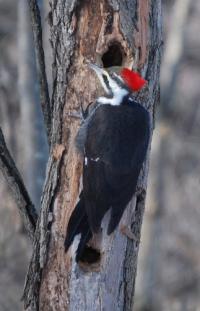 I had planned to give this reflection at a Rolling Ridge Study Retreat Board meeting that was unfortunately cancelled. I gave it instead at a residential community supper. Afterwards I was encouraged by my friends to share it here. I hesitated because it was originally intended for a specific group of listeners. After consideration, though, I think that it is one way of telling part of the story of Rolling Ridge and in that way may be of interest. So:
I had planned to give this reflection at a Rolling Ridge Study Retreat Board meeting that was unfortunately cancelled. I gave it instead at a residential community supper. Afterwards I was encouraged by my friends to share it here. I hesitated because it was originally intended for a specific group of listeners. After consideration, though, I think that it is one way of telling part of the story of Rolling Ridge and in that way may be of interest. So:
I have been struck lately by the word "study" in our name, the Rolling Ridge Study Retreat Community, or the Study Retreat Associates of Rolling Ridge. I know its origins, documented in the green pamphlet, Faith Road to Rolling Ridge. Our experiment on the mountain was born when a group of people inspired by the Church of the Saviour's inward/outward journey and captured by the dream of an intentional community in a rural setting met a strong-minded academic at the very moment the Niles sent out word of their interest in establishing a retreat center at Rolling Ridge. Paul Peachey, a sociologist, was driven by his experience in post-war Europe, where there was a deep need for neutral and safe places in which conflicting ideas and interests could be probed, discussed, analyzed in an effort to rebuild a torn society. He was also radically concerned about the challenge of faith in a scientific, techno-centric, global, pluralistic society. He used words like "defamilize" and "delocalize" to describe what was destroying human existence. To him, it was crucial to study and discuss factors that hold groups together in society and forces that tear them apart. Thus the three strands of what became our experience of Rolling Ridge came together: community, retreat, and study.
It was pretty heady stuff, though always infused by the heart and guts of life lived together. It was clear that the early study retreaters loved this land, basked in its beauty, revered its sacred spaces. They also poured their hearts into nurturing community, with one another and in a larger sense, with the diverse and needy world. Through it all, the mission of study strongly characterized Rolling Ridge, though of course it did not wholly define it. Retreats were built on fascinating topics in areas of ecology/environment/earthkeeping; interfaith dialogue; community; spirituality, meditative arts; and they were good. Theologians, teachers, writers, ecologists were invited to lead or co-lead retreats; a journal club formed to regularly read together selected articles from the publication Theology Today. The residential/staff community had only a few defined roles, and one of them was "study director".
A mark of a living, breathing, dynamic organism is that it changes, particularly if that organism is a healthy community whose ethos is allowed and encouraged to grow out of the deepest heart energy of its members. Walking through the greening forest these last few days, I have mused about the fading image of the studious in my mental picture of Rolling Ridge. I even wondered, as I stepped over Deer Spring Creek, now babbling playfully after last week's monsoon, whether "study" even any longer had a place in our community's name.
I've always loved that word, though. It holds hands with "concentration", "thought", "consideration", "presence", "insight". To me, it is redolent of a certain coziness and intimacy. I see the student curled up in a chair before the fire, absorbed in some text, or two or three heads bent over a book opened on the table before them. It rings with questions and conversations, comparisons and dialogues, relationships and depths.
This afternoon the forest was luminescent, pale and emerald green as young dog Erin and I made our way westward along Wedding Walk, on our customary loop walk to the Meditation Shelter and back again. A hint of an oncoming storm hung in the air, but for the moment, the sun glinted golden through the tree tops. A delicate chorus of birdsong fluted among the branches and the tall, elegant columns of the trees. In one of the early editions of the "Letter to Members and Partners" in October, 1997, Verle described reveling in this "supportive place with all of its Eden-like qualities".
We owe much, actually everything, to those professors and farmers, teachers and gardeners, scholars and builders who dreamed this place. Not the least of which is a legacy that wraps itself around that third word in our name. It is a many- layered word. As Erin and I wended our way eastward on the short path from the Meditation Shelter and then turned north through the Memorial Grove, just past the Peachey's stone, we heard the abrupt call of a woodpecker. A whirr of wings and a startling breath of wind and the pileated presented itself on the broken trunk of a poplar, its rakish scarlet head cocked haughtily. Lines from Mary Oliver's poem Mindful sprang into my head. It begins, "Every day I see or I hear something that more or less kills me with delight..." The poem celebrates these things, and then ends thusly, "Oh, good scholar, I say to myself, how can you help but grow wise with such teachings as these..."
Woodpecker image by Scot DeGraf. Used with permission.